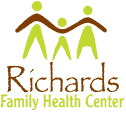Colds and Influenza
The Flu and St John's Wort
Have you noticed the recent media hysteria regarding the lack of flu vaccine this year? Are you concerned about the possible ramifications for you and your family? If so, please read on.
Influenza viruses (strains A, B and C) are members of the Orthomyxovirus family. They are encapsulated viruses, i.e., they are covered with a lipid (fatty) coating.
This is exciting, because it means the virus is accessible to treatment utilizing high quality St. John's Wort (SJW). Several studies have been done on a variety of encapsulated viruses, including herpes simplex virus types 1 and 2, parainfluenza virus, vaccinia virus, cytomegalovirus and several retroviruses including HIV
1, 2, 3, 4, 8, 9, 10. Non-encapsulated viruses or "naked" viruses were also studied for comparison purposes10,13. SJW was a potent anti-viral agent across a variety of encapsulated virus families, but showed no activity against naked viruses.
As you may be aware, a vaccine must be specific to each organism. With influenza virus this represents quite a challenge, because there is no way to know which strain will circulate in the coming year. Since it takes many months to cultivate the vaccine, authorities make an "educated guess" each year as to which strains to grow to produce the vaccine.
By contrast, SJW is active against all encapsulated viruses by a variety of mechanisms, including light activation, interference with DNA transcription, impairing the assembly of intact viral particles and the lipophilic (fat-loving) nature of the ring structures (the quinone and phenolic groups)4, 6, 7, 9, 11, 12, 13, 14, 15. These ring structures are critical to the biologic activity of SJW.
From these results, it is reasonable to use high quality, pharmaceutical grade SJW prophylactically against the flu; particularly, since there are no effective pharmaceutical agents. Quality is critical since the level of hypericin and pseudohypericin are key. I can only recommend the SJW product produced by Medi-Herb, which is a pharmaceutical house in Australia, adhering to pharmaceutical manufacturing standards. The product is distributed by Standard Process through alternative health care practitioners, including doctors of chiropractic, acupuncturists and veterinarians. SJW is quite unstable and the active ingredients degrade on store shelves. An independent analysis of 3 products (all of which were certified to contain 0.3% hypericin) were shown to be widely variant, with one product 25% below label claims. It is critically important that the phytochemical integrity of the whole plant be preserved for maximum efficacy.16
In my opinion, using St. John's Wort instead of getting a flu shot is a much better and safer choice. Two per day should be sufficient. If you feel like you are becoming ill, you can increase that dose to 2, 3 times a day for several days to nip it in the bud. The only caveat is that St. John's Wort is not effective against one of the families of virus that cause the common cold (although it is effective against the other). An additional plus is that St. John's Wort protects against ALL encapsulated viruses, including the entire Herpes family (chickenpox, shingles, Epstein Barr, oral and genital herpes), hepatitis B (but not A), West Nile Virus, Rubella (i.e. German measles), respiratory syncytial disease, measles, parainfluenza, rabies and HIV (although I doubt it can protect you from infection with HIV). That's a lot of bang for your buck!
Another issue which may be motivating the media uproar is that the vaccination rates in the US are dropping. A shortage in the vaccine supply creates market demand. What do you think?
References
Does this apply to you? If so, see our information on Consultations.
[TOP]
© 2009 This site or any part may not be reproduced without the written consent of Richards Family Health Center. N Rowan Richards, DC, DABCI, FIACA at 242 South Glendora CA 91741. 626.963.1678. email:richardsfhc@richardsfamilyhealth.com. This site is Not intended to dispense health advice or serve as a substitute for actual patient contact with a qualified healthcare provider. Our sole purpose is one of education. It is our expectation that our site can educate our visitors about the efficacy of some healthcare treatments that exist as an alternative to conventional medical wisdom.
PRIVACY POLICY: Richards Family Health Center takes your privacy very seriously. Be assured that we do not sell or rent your contact information to anyone.


